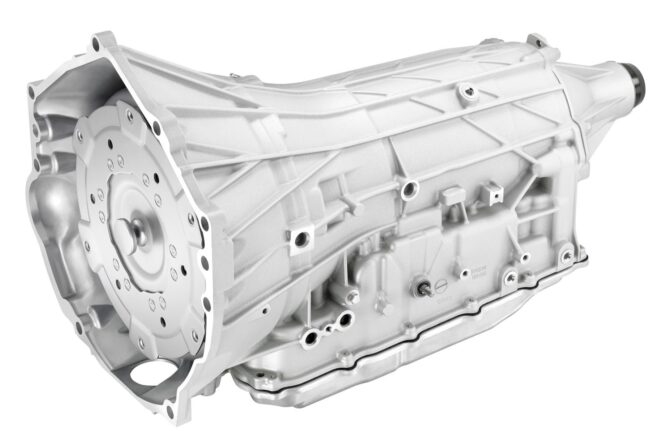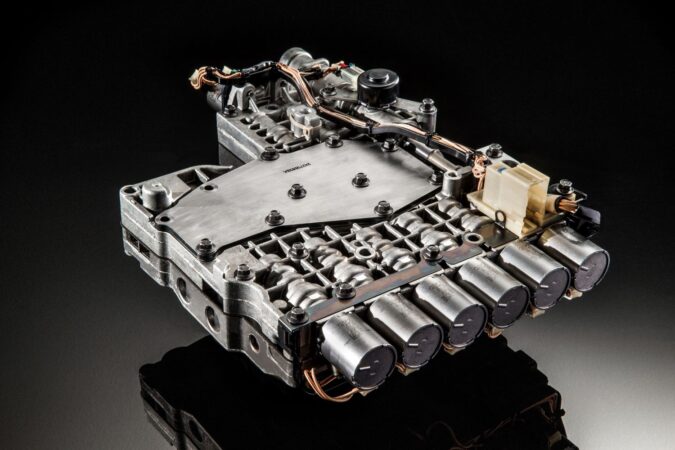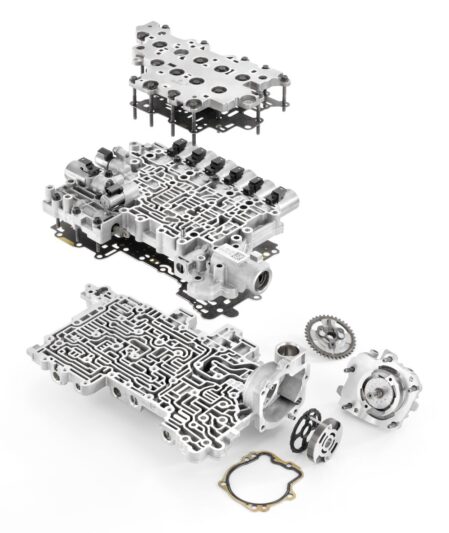In most Chevy vehicles, the Transmission Control Module is located near the firewall on the driver’s side of the engine bay. However, depending on the model, it may also be located in the engine compartment, mounted directly on top of the transmission, sometimes beneath the center console, or near the battery.
Below, we’ll break down not only where you can locate the transmission control module in most Chevy vehicles, but also why this component matters, symptoms of its failure, and what you’d need to do to fix it.
Chevy Transmission Control Module Locations Cheat Sheet
The Transmission Control Module (TCM) is a vital component in automatic gearboxes, responsible for managing shift points and ensuring the smooth operation of your car’s transmission. If your vehicle experiences transmission issues, you may need to locate and reset the TCM to resolve the problem.
For even easier reference, and while we do have more detailed explainers in the sections below, just so we could help you pinpoint where the transmission control module (TCM) is located in a Chevy as quickly as possible, we’ve prepped a handy little table for you. This table encompasses some of the most popular Chevy models on the market today:
| Chevy Model | Model Years | TCM Location |
|---|---|---|
| Silverado 1500 | 1999-2006 | Mounted on the side of the transmission case, near the bell housing. |
| Silverado 1500 | 2007-2013 | Under the hood, near the battery or the fuse box. |
| Silverado 1500 | 2014-Present | Integrated within the transmission control valve body, inside the transmission. |
| Malibu | 2004-2012 | Inside the center console, near the shifter assembly. |
| Malibu | 2013-Present | Mounted directly on the transmission housing itself. |
| Equinox | 2005-2017 | Located near the battery, or even attached to the transmission. |
| Equinox | 2018-Present | Inside the transmission, as part of the valve body assembly. |
| Tahoe | 2000-2014 | On the driver’s side of the engine bay, near the firewall. |
| Tahoe | 2015-Present | Inside the transmission case, which requires disassembly for access. |
| Traverse | 2009-2017 | Mounted on top of the transmission, which can be accessible from the engine bay. |
| Traverse | 2018-Present | Integrated into the transmission valve body, which requires removal for access. |
Where Is The Transmission Control Module (TCM) Located In A Chevy?
In addition to those locations mentioned, on some Chevy gearboxes (they have a few of those, made for different vehicles), the transmission control module (TCM) might be located on the transmission itself. For example, on the 4L60E transmission, the TCM is normally found just underneath the cover on the back of the transmission case.
Specifically, it’s located below the engine control module. Depending on your Chevy vehicle, it could also be found inside the center console, or close to your battery. That said, the location of the TCM does vary quite a bit from one Chevy vehicle to another. To more accurately pinpoint the TCM’s exact location, it’s a good idea to refer to a repair manual.
Otherwise, if your shift solenoids (on the 4L60E) need diagnosis or troubleshooting, you can find them next to where the transmission fluid pan fastens to the back of the transmission case. If your Chevy’s TCM is malfunctioning, you don’t need to replace it or send it for repairs right away. Instead, you could try to reset the TCM. Start by turning the key to the ‘On’ position.
Then, gradually depress the gas pedal until it touches the floor. Next, you can turn the key back to the ‘Off’ position, and slowly let go of the gas pedal. Wait 2 to 5 minutes before proceeding. Another thing you can do is unplug the battery and wait around 30 seconds before plugging it back in. At this point, it should reset your Chevy’s TCM.
What Are The Symptoms Of A Bad Transmission Control Module (TCM)?
However, even if you know where the transmission control module is located in a Chevy, how can you tell when it’s gone awry? Well, here are some of the symptoms you might notice if your car’s TCM has failed, malfunctioned entirely, needs a replacement, or necessitates a simple reset:
- Check Engine Light – The TCM has detected a fault, thus lighting up the CEL. And, logging in an error code for that specific fault. You can further diagnose these error codes using an OBD2 scanner. Some of the error codes related to transmission failure or TCM problems include P0700 and P0756, among many others.
- Dragging Clutch – In an automatic transmission, the clutches are what engage and disengage the gears. If they’re not functioning properly, it’s typically because the TCM is not activating or deactivating them with the proper signal. This entails issues like your car struggling to shift or producing a grinding noise while trying to shift.
- Gear Slippage – Since the TCM is unable to properly notify a gearshift, the gears may frequently slip. Other similar symptoms or issues that you could experience would be delayed shifts. The latter is particularly noticeable when you’re trying to shift into Drive or Reverse. Again, this is because the TCM isn’t properly signaling the transmission to shift.
How Much Does It Cost To Replace Or Repair A Chevy TCM?
If a reset won’t suffice, you might have to consider replacing or repairing your Chevy’s transmission control module (TCM). Usually, a replacement TCM costs anywhere between $250 to $1,250. Breaking this down; labor fees account for about $50 to $500. Meanwhile, the average cost of a brand-new Chevy transmission control module is approx. $200 to $750.
The major variable here is the labor costs. Depending on how (in)accessible your Chevy’s TCM is, it might require more or less work for the mechanic or technician to access it. As mentioned earlier, some vehicles require that the transmission be disassembled to access the transmission control module, as it’s installed within. This will cost you more in labor.
If you’re trying to save costs, it might be worthwhile shopping around for a secondhand TCM. You’ll usually find these at a scrapyard or marketplaces like eBay, but be wary of its condition. Otherwise, you could also fix or repair the TCM instead of replacing it outright. Depending on its condition, it’s not always repairable, but a repair will often cost you around $300.
Although most TCM repair companies or shops will provide some form of guarantee, there’s a bit more risk if the repair is not done properly. A replacement would be the quickest option if you can’t afford to be without your car for a few days. Additionally, you might need to ship your defective TCM to a distant area. These are some of the extra costs you need to consider.
Common Chevy Transmission Problems
If you’re trying to diagnose TCM-related issues with your Chevy, just for reference, here are some of the most common problems Chevy transmissions are plagued with. These may or may not be directly caused by the TCM, but they might help if you’re trying to troubleshoot. We’ll focus mainly on the 4L60E transmission:
- No third gear or inability to shift into overdrive, as the engine continues to rev at high RPMs. This is likely caused by a faulty 3rd-4th gear clutch pack. The underlying cause might be a faulty rubber seal around the clutch pack piston, as it shrinks over time.
- Hard second gear or inability to shift into 2nd, owing to gear slippage. This is often caused by a worn-out and malfunctioning TCC regulator valve. Normally, you’ll notice a check engine light as an early sign of failure, and an 1870 diagnostics error code.
- Can’t shift into reverse or 2nd gear, but this time, it’s due to a cracked driveshaft. The specific underlying cause of this failure is likely the planetary gear shaft, which works with the ring gear to raise or lower the drum to smoothly change gears.
- Doesn’t shift from 1st to 2nd, even when the throttle is wide open. Not being able to make a simple 1-2 shift is normally attributed to a faulty throttle position sensor (TPS). Replacing this is usually the only way to fix this for good. A prompt repair is a good idea to prevent excessive wear and tear.
How To Reset The Transmission Control Module In A Chevy?
Now, while I generally advise that you get professional help when it comes to diagnosing, troubleshooting, and attempting to reset a transmission control module (TCM) in a Chevy, you could also try doing this yourself. Of course, don’t proceed if you don’t know what you’re doing or if you’re not comfortable with it.
Nevertheless, if you are OK with it, and you’re experiencing shifting issues with your Chevy, a quick and simple reset of the transmission control module (TCM) might help restore its function and performance. To do this, here’s what you need to do:
Step 1: Turn the ignition to ‘On’ (without starting the engine)
- First up, you’ll need to insert the key and turn it to the ‘On’ position. However, make sure that you do not start the engine!
- That ought to power up your Chevy’s electronics, including the TCM (transmission control module)
Step 2: Press the gas/accelerator pedal to the floor
- Then, once that’s done, you’ll need to slowly press the gas/accelerator pedal all the way down until it reaches the floor.
- Additionally, ensure that you hold the pedal in this position for about 10 to 15 seconds. This should be enough time to prompt your Chevy to begin the reset process.
Step 3: Turn the ignition to ‘Off’
- Next up, you can release the gas/accelerator pedal slowly. After you’ve done that, quickly turn the key to the ‘Off’ position.
- Following this, please remove the key, and then leave your Chevy off for at least 2 to 5 minutes.
- This ought to allow your Chevy’s TCM (transmission control module)to reset and clear any stored data.
Step 4: Disconnect your battery (alternative method)
The latter 3 steps should be enough to reset your TCM. However, if that doesn’t work, the alternative method would be to manually reset your Chevy’s transmission control module (TCM) by disconnecting the battery. You could do this by:
- First up, open up the hood and disconnect your battery’s negative terminal using a wrench.
- Then, wait between 30 seconds to 1 minute before you can reconnect the battery.
- Finally, tighten the battery terminal securely and close the hood.
Step 5: Start the engine and test the transmission
Regardless of whether you’ve reset your Chevy’s transmission control module using Steps 1 to 3 or using Step 4 instead, it’s time to see if what you’ve done works!
- First and foremost, start your Chevy and let it idle for a few minutes.
- After that, you can take your Chevy out on a short test drive, while also shifting through all the gears to see if the earlier shifting issues persist.
- Now, if your Chevy’s transmission continues to have shifting problems, you should consider scanning for TCM error codes using an OBD2 scanner.
- If you can’t find any improvements, it might be time to consider professional help. Your transmission might require a reprogram or replacement.



